Last Updated on April 15, 2023
All dogs need to be trained. Over the years, many different dog training techniques have been developed to train dogs as easily and quickly as possible.
Some of these methods are no more than disproven theories, while others are backed up by actual scientific evidence.
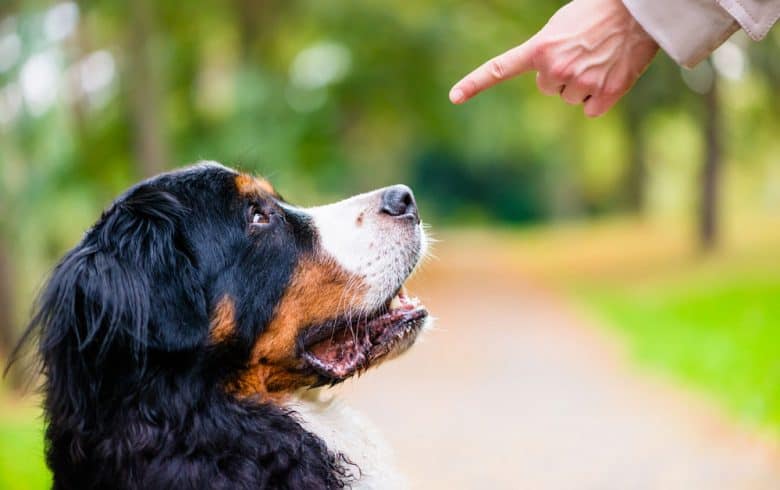
We’ll take a look at which-is-which in this article.
Quick Navigation
- 1 Dog Training Methods 101
- 2 Types of Dog Training: Styles, Philosophies, and Approaches
- 3 How do you choose the right dog-training approach?
- 4 Professional Help: How to Pick a Good Trainer
- 5 Specialized Dog Training
- 6 Dog Training FAQs
- 7 What is the best dog training method for me?
- 8 Further reading:
- 9 Reference
Dog Training Methods 101
Before we jump into the specific types of dog training methods currently being popularized, it is important to take a look at some fundamental concepts of training.
Classical Conditioning
Classical conditioning refers to the learning process where learning occurs by association. Your dog does a good thing, so you give your dog a treat.
Over time, your dog associates the positive feelings of eating the treat with doing the behavior you like. This leads to a better-behaved dog.
This is also how humans learn. We want to do things that feel good. So, we are more likely to do things that give us some sort of positive feeling.
Operant Conditioning
Operant conditioning is based on four different principles. It is very similar to classical conditioning, but negative things can also discourage the dog’s behavior.
Behavioral scientist B.F Skinner developed this concept in the 1950s.
Positive Reinforcement
This sort of reinforcement occurs when a dog performs an action you would like to see them do again. They sit on command, and you give them a treat, for example.
“Reinforcement” means you would like to see the behavior happen again, and “positive” is when you give the dog something they want.
As a result, the dog is more likely to sit the next time you ask. They have developed a positive association of sitting when you say “sit.”
Positive Punishment
This may seem contradictory, but it makes perfect sense once you understand it. In this case, “positive” simply means that you add something to the equation when your dog does an unwanted behavior.
Yelling is a good example of this. Your dog jumps on you, and you yell. The yelling was added.
Those performing positive training do not use this sort of conditioning. In this case, the word “positive” means “added,” not “good.” Physical punishment would fall into this category.
Negative Punishment
Negative means “to take something away.” Punishment means to discourage your dog from performing the same bad behavior again. If your dog jumps on you, you may turn your back.
If your dog barks, you may ignore them. These are both taking something away to discourage your dog from performing the same behavior again.
Negative Reinforcement
Out of all the principles, this one is the least used and can be a bit confusing. In many situations, it isn’t convenient. In this situation, your dog performs the desired behavior and something bad goes away.
For example, if the dog is tugging on the leash, you may stop walking. The straining on the leash is a negative feeling for your dog. When they stop pulling, that negative feeling goes away.
Types of Dog Training: Styles, Philosophies, and Approaches
There are seven main styles of dog training. Some of these are heavily backed by scientific research, while celebrities have simply popularized others (but don’t actually have any evidence to back them up).

We’ll go over each of these dog training styles one-by-one so you can choose the best one for your pooch. In some cases, you may utilize a mixture of many training styles.
The most important thing is to choose one backed by evidence – not by a trainer just looking to make a quick buck.
1. Positive Reinforcement Training
Positive reinforcement training utilizes treats, toys, and similar items to encourage your canine to perform actions that you like.
Most dogs are very food-driven, so this style usually works quite well with most dogs. Even if your canine isn’t particularly food driven, toys and practically anything your dog likes can be used instead.
This style can be done incorrectly, though. A few key steps are often forgotten, but they can make your training go haywire if you don’t do them.
Timing is essential. Without good timing, your dog won’t know exactly what they’re being rewarded for.
You want them to develop a positive association with the behavior you want them to perform. That won’t happen if you reward them long after the fact.
Secondly, the dogs need to be weaned off of the treats at some point. You can do this easily by simply lengthening the number of times your dog has to act correctly before they get a treat.
You may give your dog a treat every time they correctly sit at first, but you can increase the number of times they need to sit before the treat gets given as they learn the commend.
Eventually, they won’t need any treats to listen.
This is an easy step, but many people skip it after their dog already “knows” the command.
2. Alpha Dog / Dominance Training
This training method is based on the theory that dogs think in a dominant pack mentality—many proponents of this method claim that it is based on how wolf packs function.
However, the “alpha wolf” theory was disproven by behaviorists decades ago. The man who first put the theory to words spent much of his life trying to convince people that it was untrue.
Similarly, dogs do not function based on submissive or dominant relationships. Many dog experts have refuted this theory. After a quick look, it is easy to see simply how wrong this theory is.
For example, this theory encourages owners to eat before their dog, as it demonstrates that they are the pack leader.
However, even wolves do not display meal-time hierarchy; that’s a myth. A pet dog is not reflecting on his place in the pack as he watches you eat.
Dogs and wolves also don’t associate dominance with elevated positions, so allowing your dog on the couch has nothing to do with whether or not they’ll listen to you.
A dog diverting their eyes from their pet owner is also not a sign of submission; it’s a sign of anxiety or fear.
A dog is simply not trying to “take over the pack” when he or she misbehaves. Because of the huge amount of research discrediting this theory, you would assume that it is not very popular.
However, many celebrity dog trainers have continued to sell alpha dog theory as “the secret” to a good dog.
Alpha rolls are common in this method, which is basically where you flip your dog over. However, this technique is dangerous and kills dogs.
However, the research is pretty detailed that trying to teach your dog that you’re “the alpha” will not get you a better-trained dog. It’s going to get you a fearful and anxious dog.
This method is often used by celebrities, like Cesar Millan.
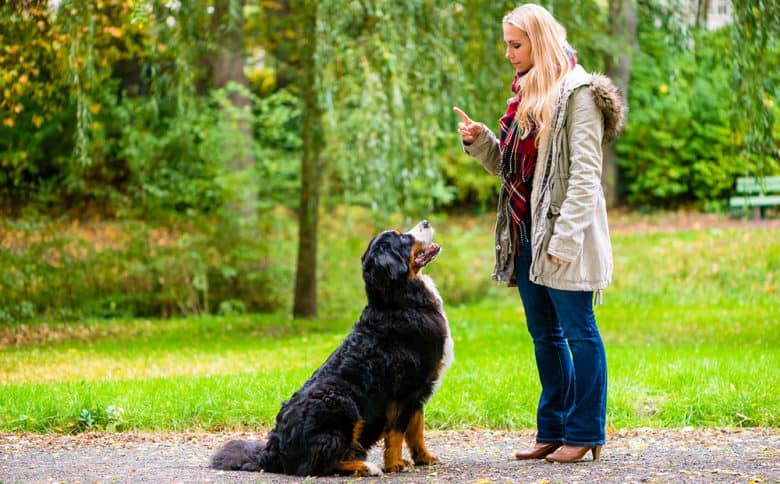
3. Clicker Training
Clicker training is very similar to positive reinforcement training. It is based on the same concepts and theories. However, clicker training substitutes treats with a clicker.
You start this method by training your dog to associate the sound of a clicker with something good – like a treat. Then, you simply train your dog like you’re using treats, but with the clicker instead.
This is also a possible training program to use after using positive reinforcement training. It can help wean your dog from treats and other rewards.
This method works especially well for dogs that are eager to please and well-behaved dogs anyway, such as retrievers.
4. E-Collar Training (Electronic Training)
Electronic training is a bit controversial. Obviously, shocking isn’t one of the kindest ways to train a dog. However, there are some situations where this sort of training might be useful.
It is important to note that this isn’t a stand-alone method. In many cases, you will need to pair it with positive reinforcement.
E-collar training is most useful in particular circumstances. Outside of those circumstances, you need to use other methods.
Firstly, you should know that e-collar training actually uses shocks very little. Most e-collars come with a “buzz” function. This is the function you’ll be using more commonly.
On a very low setting, the sensation is similar to an insect crawling on your palm. It’s a bit annoying and itchy, but not painful. Really, you’re just trying to get your dog’s attention.
E-collars are most useful in situations where you do not have direct physical contact with your canine.
For example, you may use this method for recalls when your dog is not close enough for you to reward them in another manner.
Most owners who let their dog off-lead will use e-collars for safety reasons.
There are a lot of specifics involved in this training method. For this reason, we recommend working with a trainer who knows what they’re doing or reading a few books before you begin.
5. Scientific Based Training
This method involves following the science of dog training – not just a method someone threw together.
This method has a lot in common with positive reinforcement training, as a lot of scientific evidence backs up that method.
You may not notice the difference between this method and positive reinforcement training; they’re that similar.
More science is coming out all the time. Because of that, this method may shift as time goes on.
Current science has shown that socialization is more important than more owners originally thought.
A dog that has been introduced to many different people, animals, and situations is less likely to get aggressive or fearful. Owners who follow this training method are likely to emphasize socialization.
This type of training also emphasizes the dog and owner’s relationship. You can get your dog to do a lot of things if your relationship is good.
Trainers of this school will look at the scientific evidence to train their dogs.
6. Model-Rival or Mirror Training
This type of training is based on the principles of social learning. Basically, it works under the assumption that dogs are social animals and will “compete” for attention, just like people.
It also assumes that dogs can learn by watching.
Mirror training involves two different people – the trainer and a “mirror.” In view of the dog, the trainer gives a command to the mirror, performs it correctly and receives an award (that the dog would like).
Sometimes, a trained dog is used instead of a person.
Either way, the basis of this method is showing your dog how to do something. You work with your dog’s ability to socially learn and copy another dog or person’s actions.
7. Relationship-Based Training
This method focused on using the cooperative relationship between dogs and their owners. The aim is for the owner and dog to learn to work together while also strengthening their relationship.
In this method, the owner must do some “extras” to ensure a solid working relationship.
For example, dog owners are encouraged to learn about dog body language to appropriately figure out what their canine is trying to tell them.
Trainers using this method rely on positive reinforcement and do not use aversive methods. Instead of discouraging a dog not to do an undesirable behavior through force or fear, the correct behavior is emphasized.
For example, instead of teaching a dog not to jump on someone as a greeting, the dog is taught to sit and wait for attention.
Because the dog can’t sit and jump simultaneously, encouraging the sitting gets rid of the jumping.
Supervision is an essential part of this training process. It is not recommended to give your dog too much freedom before they can safely manage it.
How do you choose the right dog-training approach?
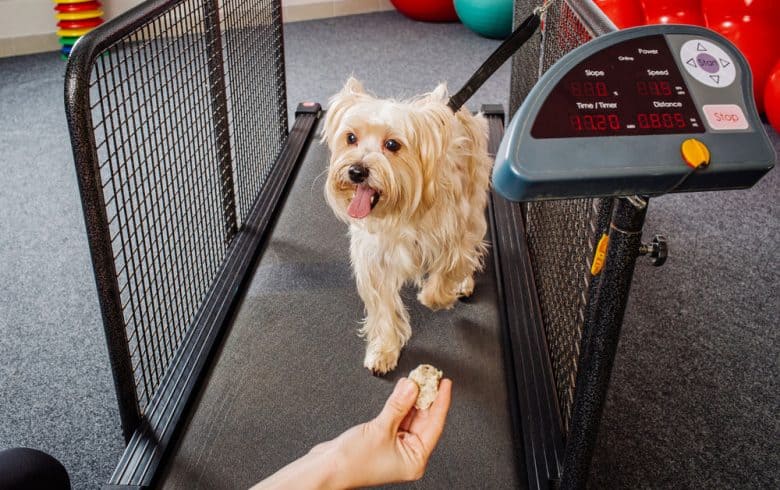
The best training approach is one that works well for you and your canine. Your first criteria should be whether or not the approach is backed by scientific evidence.
While training methods not backed by scientific evidence may work eventually, studies show that those in line with dog behavior work better than those that don’t line-up with how dogs behave.
In other words, work with your dog – not against them.
Depending on what you want to achieve, you may have to shift between different learning styles.
For example, if you want to teach your dog to walk off-leash, you may need to use an e-collar, even if you only use positive reinforcement training during the other periods.
Furthermore, some dogs are better suited to some methods than others. Extremely food-driven dogs are better suited for positive reinforcement training.
Dogs that are attention-driven may be better suited for relationship-based training, though.
You may also consider the resources you have available. For instance, if you’ve already picked up a dog training book or two, you may want to at least read them before deciding on a method.
If you already have a clicker, feel free to utilize it.
Professional Help: How to Pick a Good Trainer
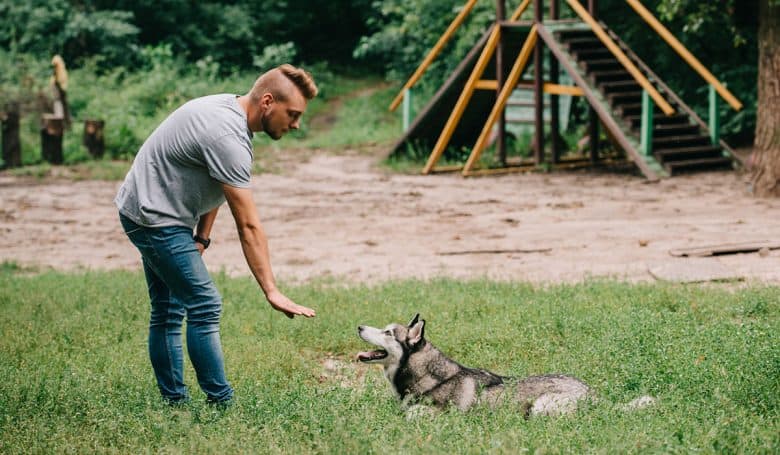
Even if you plan on mostly training your dog independently, group training classes are a great way to socialize your canine and get some professional training tips.
When seeking the help fo a trainer, customer reviews can be important. However, you should take them with a grain of salt.
Even when working with a trainer, you will need to do a lot of work independently with your dog. Some people don’t understand this and will rate the trainer low.
Furthermore, some dogs are going to be somewhat trained eventually no matter what. Just because a dog didn’t know the “sit” command before working with the trainer and does after working with the trainer doesn’t necessarily mean the trainer is great.
You should instead rely on trainer accreditations. Also ask the trainer about what method they follow and their opinions on certain training equipment, like clickers, shock collars, and prong collars.
You should also look at the dog training community surrounding the trainer. You can learn a lot about someone from their friends.
Occasionally, you may need to seek out an animal behaviorist for extreme problems.
Specialized Dog Training
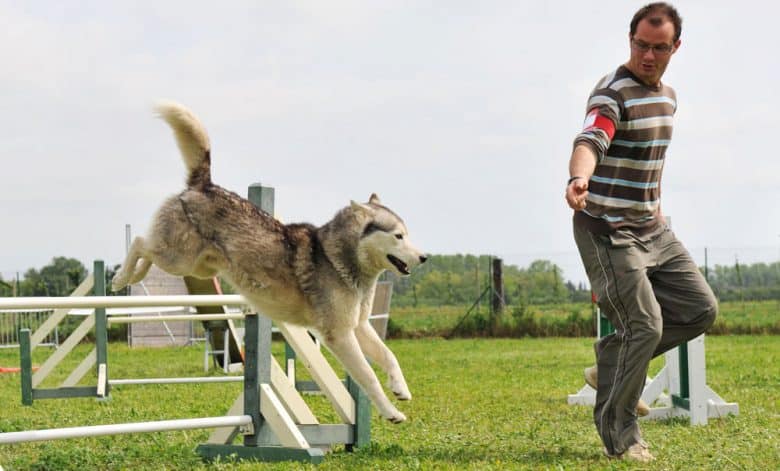
After basic obedience, you may want to take your dog’s training a step further. Before attempting any advanced training, be sure your dog knows the 7 basic dog commands and can do them without worry.
These commands are:
- Sit
- Stay
- Down
- Come
- Off
- Heel
- Leave It (No)
After your dog has accomplished these basic commands, you can work on some specialized training or more advanced new behaviors, like recalls.
Even if you don’t necessarily plan on using any advanced training, it is a good way to develop your relationship with your canine and keep them challenged.
Here is a short list of some more specialized training you may want to pursue:
- Agility
- Behavioral
- Service
- Therapy
- Tracking
- Protection
Dog Training FAQs
Traditional training vs. modern dog training methods
Traditional dog training is just another name for alpha dog training. This method involves a lot of assertiveness and punishment.
It creates fearful and anxious adult dogs that follow what their owner says because they are scared. Furthermore, it is not backed by any scientific evidence.
Modern dog training methods follow science and behavioral psychology. Positive reinforcement is involved, and the dog’s relationship with their owner is used to encourage good behavior.
What are the 5 golden rules of dog training?
- Let the dog choose. Focus on controlling the environment the dog is in so they are more likely to choose to make a good choice. Dogs that choose to make a good choice are more likely to do so in the future. In other words, if you don’t want your dog to take food off of your plate, don’t leave your plate on a low coffee table where the dog can get it.
- No pace for punishment. Punishment is less effective than rewards.
- Pay the sticker price. Dogs will need different sized rewards for different situations. Use high-value treats when you need them, but not when you don’t.
- Facilitate predictable outcomes. Set your dog up for success and don’t ask them to do something they probably won’t.
- Resist repeating yourself. Don’t let commands become background noise by not repeating them. If the dog doesn’t respond, you need higher valued rewards or more training in a less challenging environment.
What should I start puppy training my dog?
As soon as you bring the new puppy home. As long as you keep training sessions short, it is never too early to start obedience training.
How do you punish a puppy?
You don’t. Punishment does not create results as fast or effectively as rewards do. Reward your puppy for the correct behavior, and they will stop the negative one.
What method is used to train police dogs?
Most police dogs are trained using positive reinforcement. This works faster than traditional dog training and produces a healthier dog.
The dog enjoys their work more and is less likely to become anxious or fearful on the job.
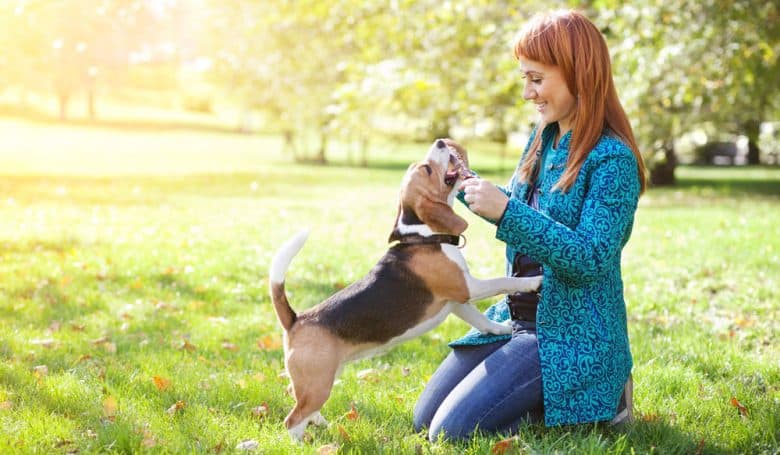
What is the best dog training method for me?
The best dog training method is one that is backed by science and uses positive reinforcement. Luckily, there are actually quite a few training methods that match this description.
You will likely use multiple methods depending on what you’re trying to teach. Don’t feel like you have to try just one!
Further reading:
- Good & Bad Common Dog Behaviors: Why do dogs do it?
- Steps on how to be the alpha leader of your dog
- Choosing the Best Dog Training Books
Reference
- https://vcahospitals.com/know-your-pet/dog-behavior-and-training-dominance-alpha-and-pack-leadership-what-does-it-really-mean
- https://time.com/5880219/science-of-dog-training/
Cess is the Head of Content Writing at K9 Web and a passionate dog care expert with over 5 years of experience in the Pet Industry. With a background in animal science, dog training, and behavior consulting, her hands-on experience and extensive knowledge make her a trusted source for dog owners.
When not writing or leading the K9 Web content team, Cess can be found volunteering at local shelters and participating in dog-related events.
